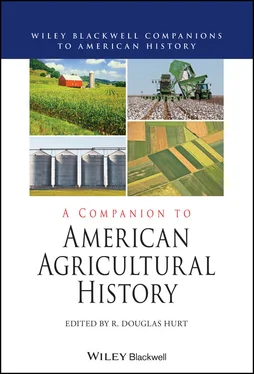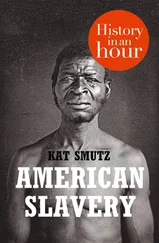From this huge block of land, Chapman, in 1875, carved out the first successful settlement, the Central California Colony, 3 miles southwest of the Fresno railroad depot. He started by dividing six sections into 192 lots of 20 acres each and building an intricate system of canals and laterals to supply Kings River water to each tract. The developers laid out 23 miles of roads between the lots, lining them with varieties of fruit trees and naming each avenue after its particular fruit. Lots, water rights included, were priced to sell at $1000 ($100 down, $12.50 per month, and no interest). Buyers were encouraged to cultivate high-value crops—in particular raisin grapes, which thrived in Fresno’s natural environment of hot, dry summer days and cool, moisture-free nights, and the valley’s sandy loams. With crucial assistance from the Southern Pacific Railroad, Chapman promoted the colony in newspapers, pamphlets, and posters throughout the country. The standard pitch began: “Why will you go on year after year planting grain, trusting to the uncertain rainfall, and invariably losing in a dry season the hard-earned savings of several favorable years, when in the Central California Colony, you may secure land and an abundance of water to irrigate it at a moderate price and easy terms of payment?” (Clough and Secrest 1984; Vaught 1999; Orsi 2005).
The colony, an enormous success, served as a blueprint for subsequent endeavors. By 1890, thirty-four similar settlements surrounded Fresno within a 20-mile radius. They varied in area from one to fourteen sections and covered over 50,000 acres. The colonies encouraged the development of small towns—Oleander, Malaga, Fowler, and Selma, for example—with schools, churches, stores, dairies, and social clubs. By the turn of the century, the boundaries between the colonies had become blurred, creating a vast, unbroken region of small farmers—3000 vineyards of 10–40 acres sustained by 5000 miles of irrigation canals and ditches. Their community, the settlers firmly believed, was a virtuous place somewhere between the isolated self-sufficient Jeffersonian rural order and the market-dominated, impersonal industrial city. It was a place where landowning families lived on small, orderly, and prosperous vineyards in close proximity to one another. It thus fostered neighborliness, strong local social and cultural institutions, and economic progress, all in an environment that was aesthetically pleasing as well (Clough and Secrest 1984; Vaught 1999; Woeste 1998).
Not all aspects of the raisin community proved ideal, however. Indeed, labor relations became the Achilles’ heel to the farmers’ dream of a viticultural paradise. Even in the smallest vineyard, they could not harvest their labor-intensive crop without a force of seasonal workers. The scale and scope of the raisin harvest was overwhelming. Typically, a 20-acre vineyard required ten workers for the three-week harvest in mid-September—a demand, if considered in isolation, that seems not all that unmanageable. But every vineyardist’s harvest occurred at virtually the same time as every other vineyardist’s harvest. Thus, an estimated 18,000 workers were needed to pick and pack the 70 million pounds of raisins by 1900—all of them temporary workers, hired at the season’s beginning and dismissed at its end. Few chose to endure the conditions that boosters never mentioned: no job security; temperatures soaring over 100 degrees; dry, dusty, and shadeless terrain; and with the work itself, constant stooping or squatting. The work attracted only those with limited options, and from the very outset, they were largely Asian immigrants—first Chinese and by the turn of the century, Japanese. Both gravitated toward the opportunity for vineyard work, which paid $1.00–1.25 a day (Chan 1986; Iwata 1992; Vaught 1999).
The system of labor organization enhanced their value even more, for it was contractors who solved growers’ supply and recruitment problems. Most were well-connected local merchants who could secure large numbers of harvest workers from Sacramento, Stockton, and San Francisco with just a few hours’ notice. They quickly learned to seize the moment and assert their bargaining power. By 1900, it was clear that Japanese contractors, not farmers, controlled the labor market. Their favorite strategy was to withhold the labor of their workers at the height of the harvest and demand a higher rate. Farmers had little recourse. Individual efforts to try and replace striking workers invariably failed because contractors, tightly organized as they were, rarely infringed on each other’s territory. And since anti-Asian sentiment prevailed in California cities, growers’ dependence on Japanese labor damaged the reputation of their communities and their enterprise (Hallagan 1980; Chan 1986; Iwata 1992; Vaught 1999; Street 2004).
Between 1880 and the early 1900s, specialty-crop agriculture became the state’s leading industry, with varying patterns of settlement but with similar community idealism and labor problems as in Fresno. Orange groves spread through the upland valleys of southern California, lemons along the coast (Guerin-Gonzales 1994; Orsi 1995; Sawyer 1996; García 2001 ; Sackman 2009). Wine grapes flourished in the valleys north of the San Francisco Bay (Carosso 1951; Olmstead and Rhode 2008; Cinotto 2012; Briscoe 2017; Conaway 2018). Deciduous fruit and nut orchards took root in the Bay Area, the Sacramento Valley, and the northern San Joaquin Valley (Scheuring 1983; Starr 1985; Stoll 1998; Vaught 1999; Tsu 2013). After 1900, with advances in irrigation and refrigeration, lettuce, melons, berries, tomatoes, dates, and other crops spread along the Pajaro and Salinas rivers and into the deserts of the Imperial and Coachella valleys (Nakane 1985; Wells 1996; Andrés 2014; Ivey 2007; Flores 2016). By the early twentieth century, California had become the nation’s most diverse agricultural region and its leading producer of wine and table grapes, raisins, winter vegetables, lemons, almonds, walnuts, tomatoes, sugar beets, plums, prunes, and apricots (Scheuring 1983; Starr 1985).
During this time, many of these producers, in a manner closer to an industrial model, organized powerful cooperatives to market and brand their crops. Founded in 1893, the California Fruit Grower’s Exchange (Sunkist) became the first successful cooperative, followed by groups of raisers of walnuts, almonds, deciduous fruit, raisins, dairy cattle, poultry, and other products. These organizations limited production, regulated prices, adopted grading standards, and took charge of packing and marketing in order to eliminate middlemen. For most Americans, the taste of California came via Sunkist oranges, Sun Maid raisins, and Blue Diamond almonds. And, as an added dividend, it was the same clever marketing that persuaded Americans that fruit was an everyday food, not a luxury saved for birthdays and holidays (Erdman 1958; Blackford 1977; Street 1979; Woeste 1998; Orsi 1995; Vaught 1999).
Like raisins, cotton, California’s most profitable crop by 1950, benefited from the San Joaquin Valley’s favorable environmental conditions. The Pacific Ocean and the state’s two principal mountain ranges—the Coast Range on the west and the Sierra Nevada on the east—protect the valley (and most of the state) from extreme temperatures and snow, creating mild winters, rainless summers, and long growing seasons. Rain rarely falls between May and October—perfect for raisins, which are dried on trays between the vineyard rows over a 2-week period in late September/early October; and perfect for cotton, where wet leaves and bolls can destroy a crop or result in a severe grade loss, and where muddy ground keeps tractors and mechanical pickers out of the fields. Environmental conditions kept the San Joaquin Valley free of bollworms and weevils, and for the variety of other pests that attacked cotton, ranchers had DDT and a number of other lethal chemical agents (Bakker 1971; Turner 1981; Musoke and Olmstead 1982; Clough and Secrest 1984; Kirby 1987; Olmstead and Rhode 2008).
Читать дальше











